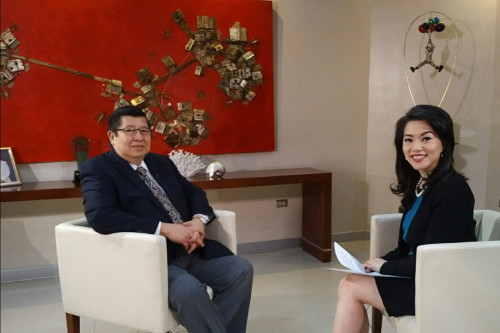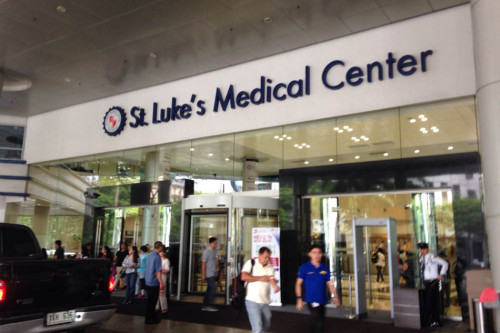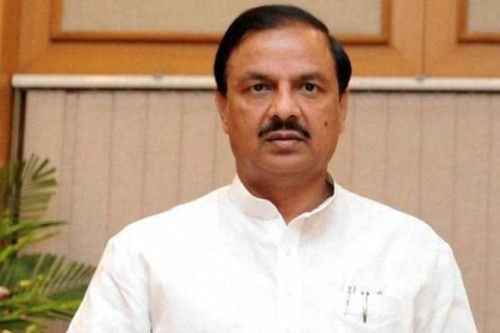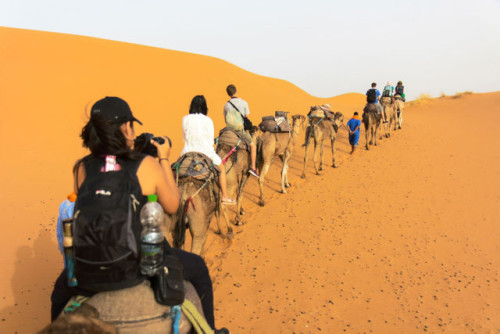Dental tourism has been expanding, especially for pricey procedures such as implants and root canals. Patients say they’ve received good care and saved thousands on expensive dental treatment by traveling abroad, but the ADA warns it could end up costing patients more if problems arise when they get home.
When Ralph Grosswald and his partner, Terri Heeter, of Santa Fe, NM, needed extensive, expensive dental work, friends told them about getting good care at a dental clinic across the border in Palomas, Mexico.
“We needed four crowns, and Terri needed a little cosmetic work, and it was going to cost about $6,000,” Grosswald told DrBicuspid.com. “We got good referrals from people who had work done there, and we had $6,000 worth of dental work done for about $920.”
More than 500,000 U.S. residents traveled out of the country for dental care in 2013, according to the medical tourism group Patients Beyond Borders. Mexican dentists even advertise in the weekly newspaper with procedure prices to show the comparison to U.S. dentists.
Central America: Hot spot for dental tourism
Based on their experience and Heeter’s background as a travel consultant, the couple started Beyond Borders Dental , a dental concierge service that arranges dental care, lodging, and round-trip transportation from Santa Fe and Albuquerque, NM, to dental clinics in Palomas, Mexico.
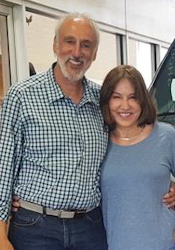
Ralph Grosswald and Terri Heeter, operators of Beyond Borders Dental.
“We found that people who needed dental work were concerned about safety, which dental clinics to go to, and what documentation was required in Mexico,” Grosswald explained. “They needed a lot of support and hand holding.”
Other dental tourism companies offer trips to Costa Rica, the Czech Republic, and Thailand, but Grosswald said many people can’t take that much time off or don’t want to spend thousands of dollars for airfare.
“We can take you to Palomas and either wait for you or bring you back next day, so you don’t have to miss a lot of work,” he said. The company works with several clinics, which have seven dentists and about eight specialists who do periodontal or orthodontic work.
The most common procedures are crowns, root canals, veneers, and cosmetic dentistry, Grosswald said.
“Any work that can be done in U.S. can be done in our clinics,” he said. There’s also a big demand for implants, which can be done for $1,500, about $1,000 less than stateside, Grosswald said.
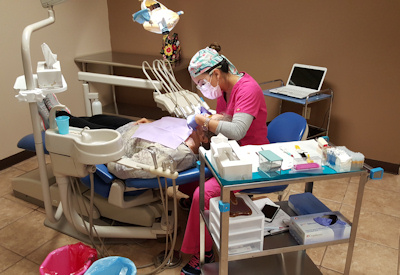
A dentist in Palomas, Mexico, working on a patient. Image courtesy of Beyond Borders Dental.
What about quality of care?
Don Pardue of Jacksonville, FL, heard about good dental care in Costa Rica during his fishing trips there.
“Americans who lived there raved about dental care and how good it was,” Pardue told DrBicuspid.com. “I had an empty spot and needed an implant on my lower right, which would have cost about $3,000.”
So about 10 years ago, Pardue went to a dentist outside the capital of San Jose
____________________________________________________.
“There are thousands of people who need dental care but can’t afford it or have dental insurance that’s not good enough, and for them this is a very viable alternative.”
— Ralph Grosswald, CEO, Beyond Borders Dental
______________________________________________
“I went to see him initially, and he said it would be no problem and would require two visits,” Pardue said. “He was trained in Miami and spoke English very well. Everything was very clean and very professional.”
The dentist used general anesthesia during the oral surgery to place Pardue’s implant, which cost about $800.
“He put me under with an IV, and there was an anesthesiologist right beside me to monitor it,” he said. “I went fishing the day after the implant.”
Pardue returned to Costa Rica two weeks later for a checkup and had a crown placed on it back home in Florida.
“My U.S. dentist showed me the x-rays and said it was excellent work,” Pardue said. “Every time I go back he says, ‘How’s that Costa Rica implant?’ and takes a look, and there has never been a problem.”
Would he recommend going to Costa Rica for dental work to others?
“Absolutely,” Pardue said.
Nana Lopez, DDS, a dentist with Community Health of South Florida , recounted mixed experiences of patients who went abroad for dental treatment.
When Dr. Lopez was the dental director for Austin, TX, her hygienist and a couple of dental assistants went to Piedras Negras, Mexico, to get treated by a U.S.-trained dentist in 2001.
“He did very inexpensive gold crowns,” Dr. Lopez told DrBicuspid.com. “I examined two of them, and they were good quality.”
The crowns cost about $100 each, she said.
But a Florida Keys patient had a different experience in Nicaragua.
“He needed a bridge where he had lost #4 or #5, and he was from Nicaragua and needed to visit his mother, so he had a cantilever bridge made for about $35,” Dr. Lopez said. “He proudly brought it back for me to see and it was not good — yellow gold with some kind of plastic facing on pontic, bulky margins, open margins. I told him it was not good and why. He was going to return and have them make it better.”
ADA warns about complications
Maria Lopez Howell, DDS, a San Antonio dentist and an ADA spokeswoman, has unique insight into dental tourism: She is one of 13 dentists in her extended family, including nine who practice in Mexico.
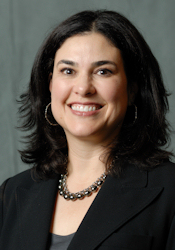
Maria Lopez Howell, DDS.
“I started translating for my uncle and aunt’s dental practice in Mexico when I was 4 years old,” Dr. Howell told DrBicuspid.com. “I helped translate for American patients who came to them for dental care.”
She described the dental care some of her patients had in Mexico.
“One woman came back and needed some treatment,” Dr. Howell said. “It was a crown that basically didn’t fit correctly, and I had to replace it.”
Dental technology has advanced greatly, but potential problems also can be greater because many procedures are now more complicated, she said.
“If something happens during treatment where the patient is in a compromised position, what recourse do they have? Is there a ministry of health? Is there a local dental society?” she asked. “You went down there for crowns, because it’s cheaper and now it’s not. You really have to do your research.”
Also, infection control and safety standards in U.S. dental offices are really the gold standard, Dr. Howell noted.
Dentists also have insight into their long-term patients.
“We monitor certain things for our patients that are actually more cost-effective for them over time,” Dr. Howell said. “Whereas someone who doesn’t know the patient will perhaps make a decision to intervene when monitoring may be in the patient’s best interest.”
“It’s not for everyone,” Grosswald said of international dental care. “But there are thousands of people who need dental care but can’t afford it or have dental insurance that’s not good enough, and for them this is a very viable alternative.”
source: http://www.drbicuspid.com / DrBiCuspid.com / Home / by Donna Domino, Staff Reporter / July 14th, 2016
